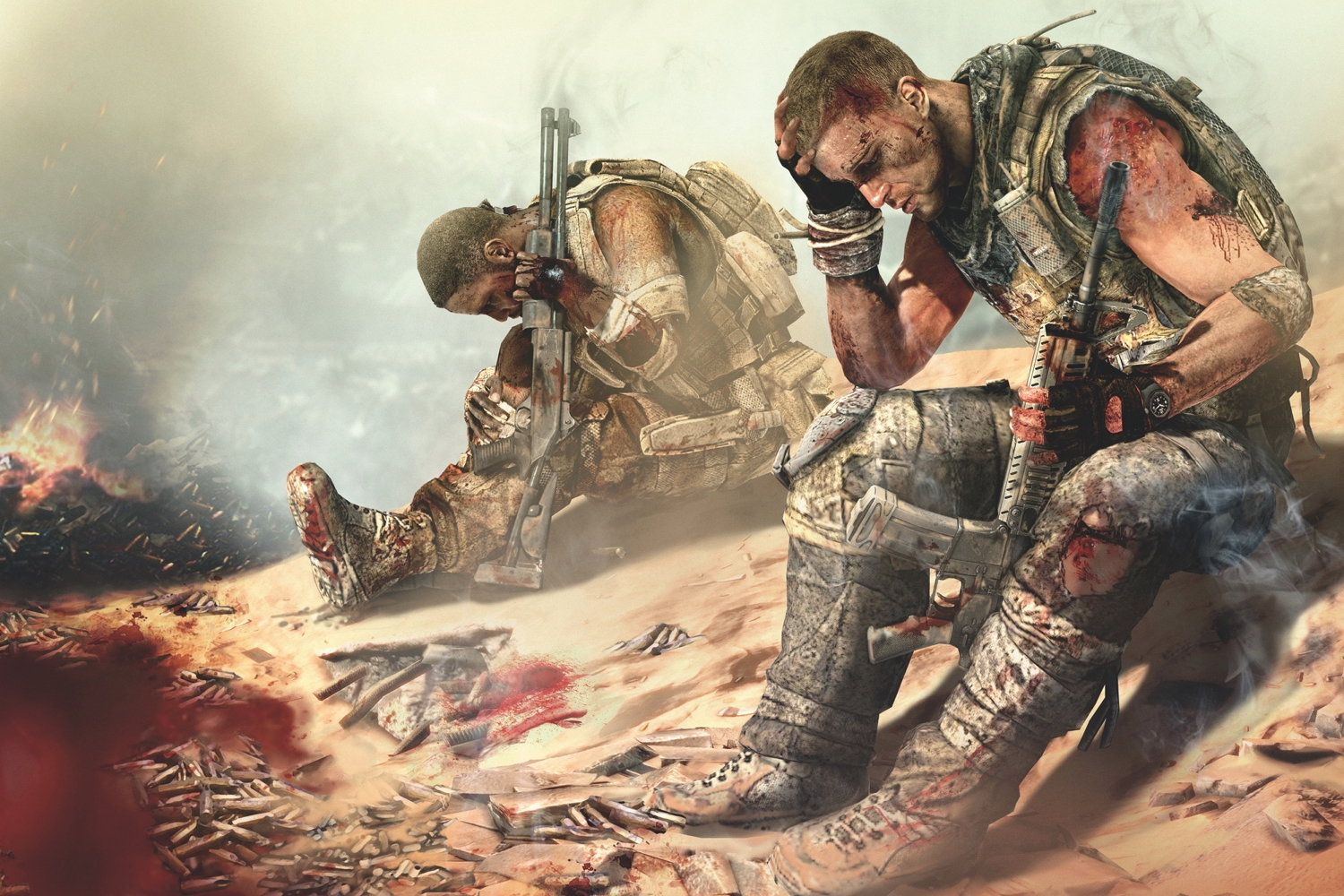Nothing can really affect you the same way a video game can. The uniqueness of video games as a medium allows for storytelling to personally impact us and make statements about our world in new ways. Their interactivity and element of choice leave you thinking that you yourself are responsible for the events that unfold. They sprout deeper meanings in ways that other forms of media simply can’t. Video games can show an entirely new dimension, one in which the user’s input is woven into the story to make a difference.
If you’ve ever played the third-person shooter Spec Ops: The Line, you know what I’m talking about.
Spec Ops: The Line
In Spec Ops: The Line, you play as Captain Martin Walker as he embarks on a rescue mission in a rough-looking version of Dubai. Throughout the story, Walker and his three-man team tear through the country looking for a unit accused of treason, gunning down multiple enemies in the 33rd Battalion without remorse. In one especially impactful scene, the team attacks their enemies with white phosphorus — considered a war crime in international law — only to find out they’ve killed 47 civilians instead.
After this, Captain Walker begins to lose his sanity and descends into a spiral of violence and unsympathetic behavior toward the 33rd. From here, the game starts to target the player as the cause of this tragic event. Loading screens call out the player with details about post-traumatic stress disorder and “tips” such as “The U.S. military does not condone the killing of unarmed combatants. But this isn’t real, so why should you care?”
The Spec Ops: The Line narrative designers explained that they wanted to give players a taste of a video game where they aren’t the good guy as a player or as a character. Not only has the main character been through countless traumas that will stay with him for his entire life, but you as the player are the cause of his trauma. It can feel like a punch in the gut to people who regularly enjoy playing these types of games.
Likewise, Spec Ops: The Line attacks the use of war as entertainment, which is a tactic that’s frequently used in video games. Yet by playing these games, players can glorify war in their own minds without focusing on the real-world stories of veterans and people actually affected by war. The way the game targets the player’s involvement in the story of Captain Walker is sure to make any gamer rethink their game library.
Danganronpa V3: Killing Harmony
Similar to Spec Ops: The Line, Danganronpa V3 guilts players for their in-game choices. Danganronpa V3’s storyline features high schoolers who are forced to participate in a game in which they must get away with murder in order to be let out of an enclosed area. In the final trial of the final installment in the series, it’s revealed that the signature ahoge hairstyle sported by all the protagonists is an antenna that allows the players to control the characters. In addition, the third game in the series is actually the 53rd television broadcast of the killing games, pushing the responsibility of demand for more games onto the Danganronpa community.
By implying that the player is entitled, the game protects itself from players’ whines for a new game in the series. It keeps players from asking for more when they’re referenced as being the perpetuating factor in a cycle of brutal killing games. This statement by the company attempts to lead players to contemplate their own response and reception of games. In a subtle reminder of “I don’t owe you anything,” the company Chunsoft asserts that the Danganronpa series had to end before it became too redundant, just as the 53rd season of a TV show would be.
Metafiction in Video Games
But why is this approach in video games so impactful? When video games begin to dabble in metafiction, or how a character understands their place in a piece of media and acknowledges that they’re not real, interesting things can happen. Breaking the fourth wall in a movie or book can come off as comedic, like when the MCU’s Deadpool looks at the camera after telling a joke. However, in the realm of video games, it comes off as a little too personal. Deadpool laughing at himself goes away on its own; in a video game, you have to input a response and essentially talk to a character that now seems all the more alive and sentient.
When Monika from Doki Doki Literature Club calls you by your real name she found in your Steam account or when she deletes other characters’ files off your computer to be the only one you get to see in-game, she seems a little more real, doesn’t she? Characters in video games that directly talk to the player establish a new type of connection that can’t be achieved in movies or books. And while interacting with characters in video games that know that they’re characters in a video game can send you into an existential crisis, it’s important to listen to their voices. Even though video game characters aren’t real — even the ones that say that they are — the character was created by someone who had something to say, and they used that character as their voice.
Video game narratives that attempt to bridge the gap between the screen and the player will always be one of the most impactful pieces of media. Referencing not only the player but the player’s decisions make for a critical rethinking of the player’s own game input. When the fourth wall is broken and the player sees themselves on the screen of their own game, it can become a mirror for looking internally. The media we consume can shape us in many ways, and using these methods to tell a more effective narrative can guide players to look more deeply into the meanings and statements their video games are trying to make.
















